Easter is the most important holiday for Christians, to which many religious and folk traditions can be tied. Christians have been walking the Way of The Cross on Good Friday for centuries, remembering the story of Jesus' suffering on Golgotha in Jerusalem. There were once several calvaries (Ways or Stations of The Cross) in Buda and Pest, many of which can still be found in the city to commemorate this. One of them is the calvary in Kiscell.
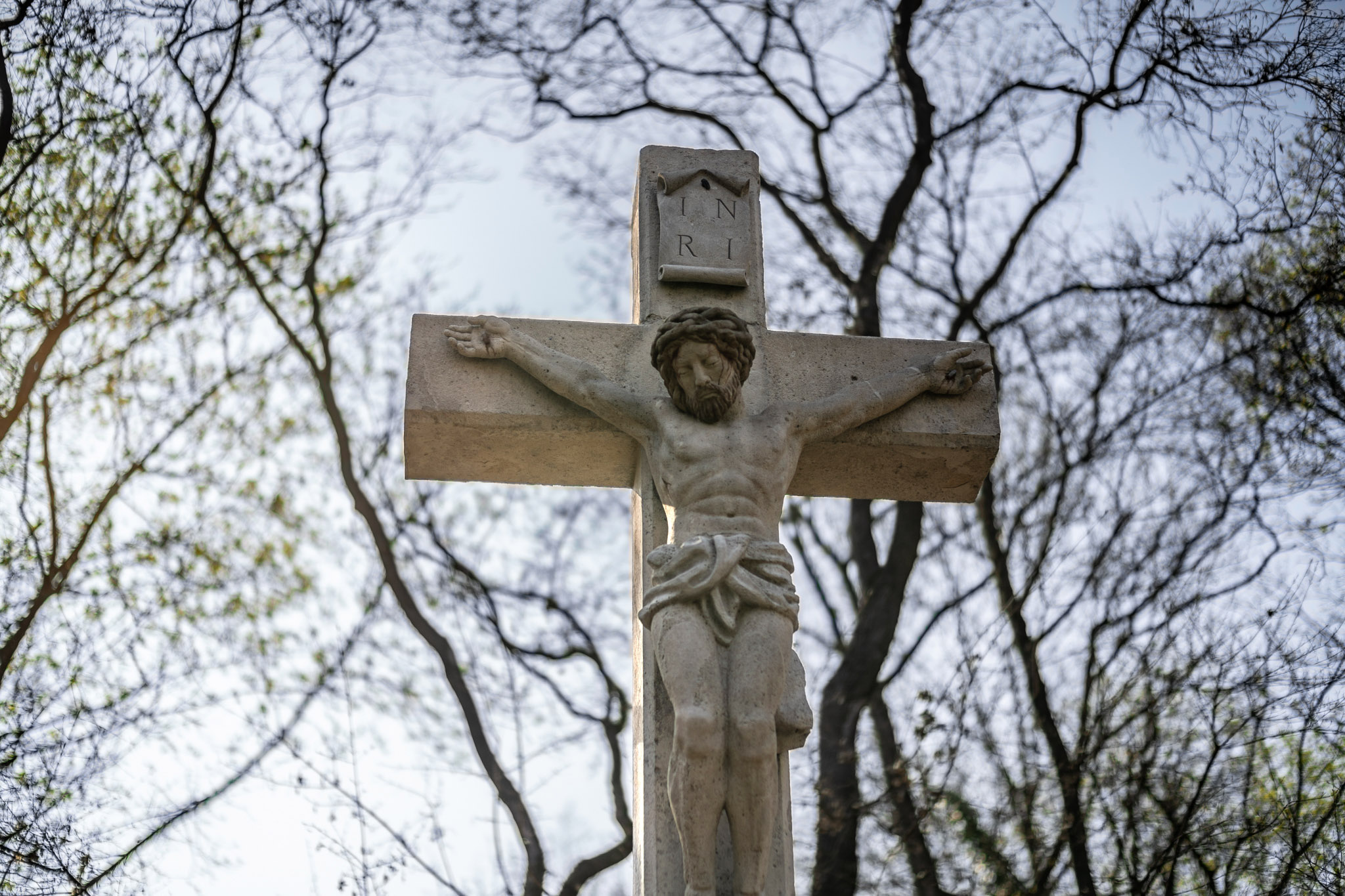
Jesus is the central element of the Golgotha statues, which can be seen in their restored state (Photo: Balázs Both pestbuda.hu)
The Kiscell Calvary, which weaves above Bécsi Road, is one of the oldest calvaries in Óbuda. A stone-railed uphill stairway begins at Saint Margaret Hospital on Kiscelli Street, leading to the former Trinitarian monastery, today's Kiscelli Museum. The 14-station Way of The Cross begins here. The path is a continuation of Doberdó Road, and the blue cross leads to the three crosses of the Golgotha statues and the Chapel of the Holy Blood.
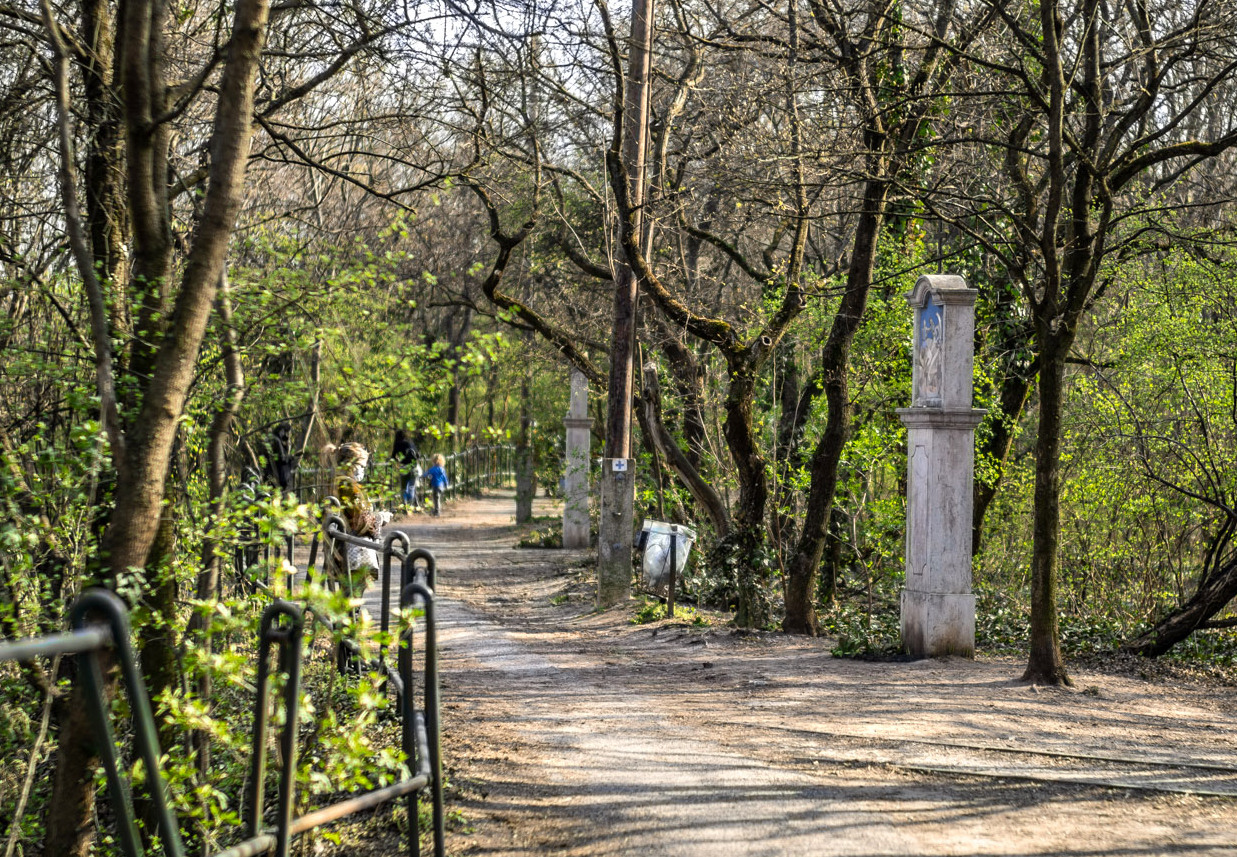
The Way of The Cross starts next to the Kiscelli Museum, the blue cross sign leading up to the calvary and the Chapel of the Holy Blood (Photo: Balázs Both/pestbuda.hu )
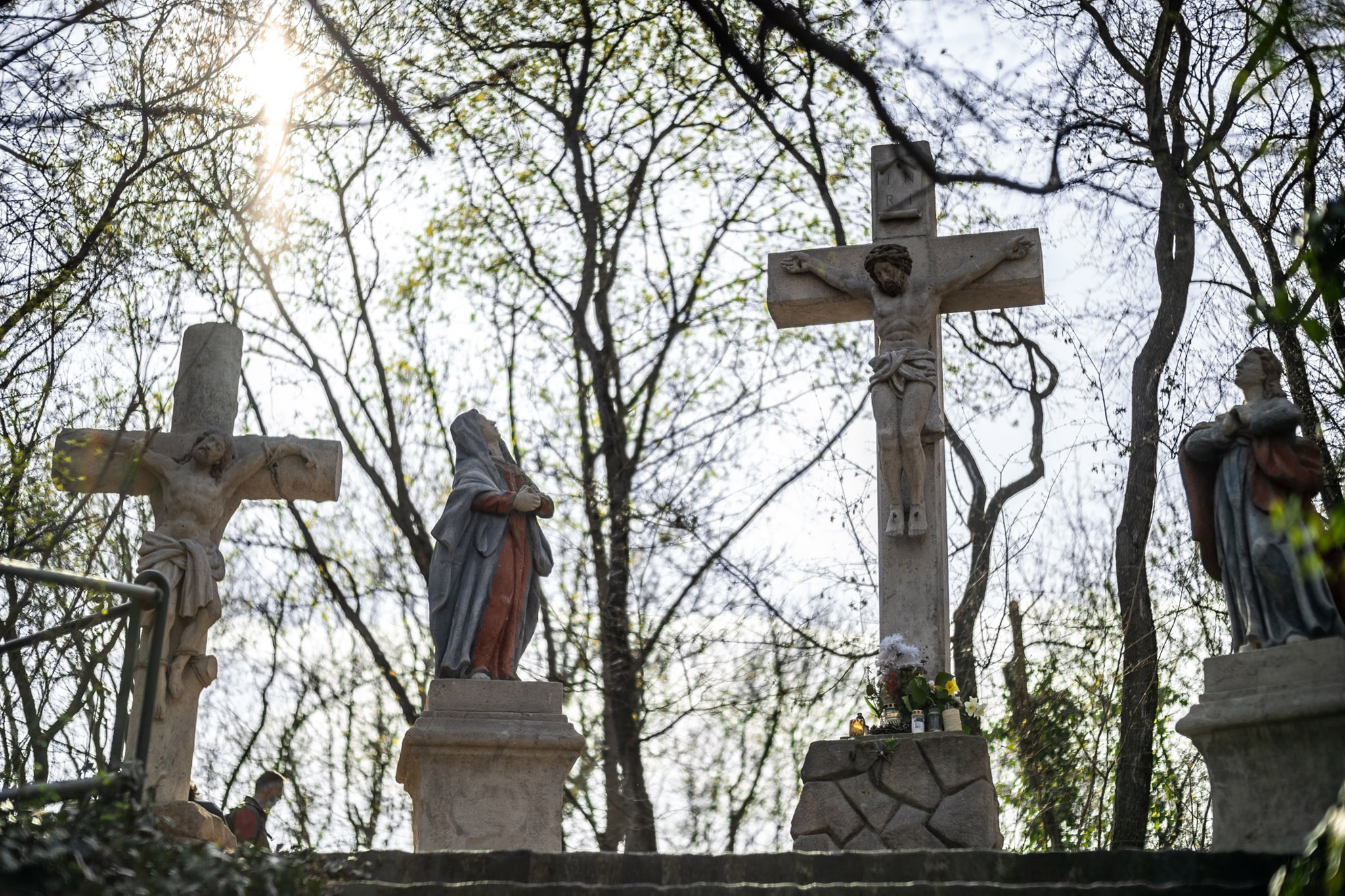
The Penitent thief and the cross of Jesus, the statue of Mary and John on the calvary (Photo: Balázs Both/pestbuda.hu)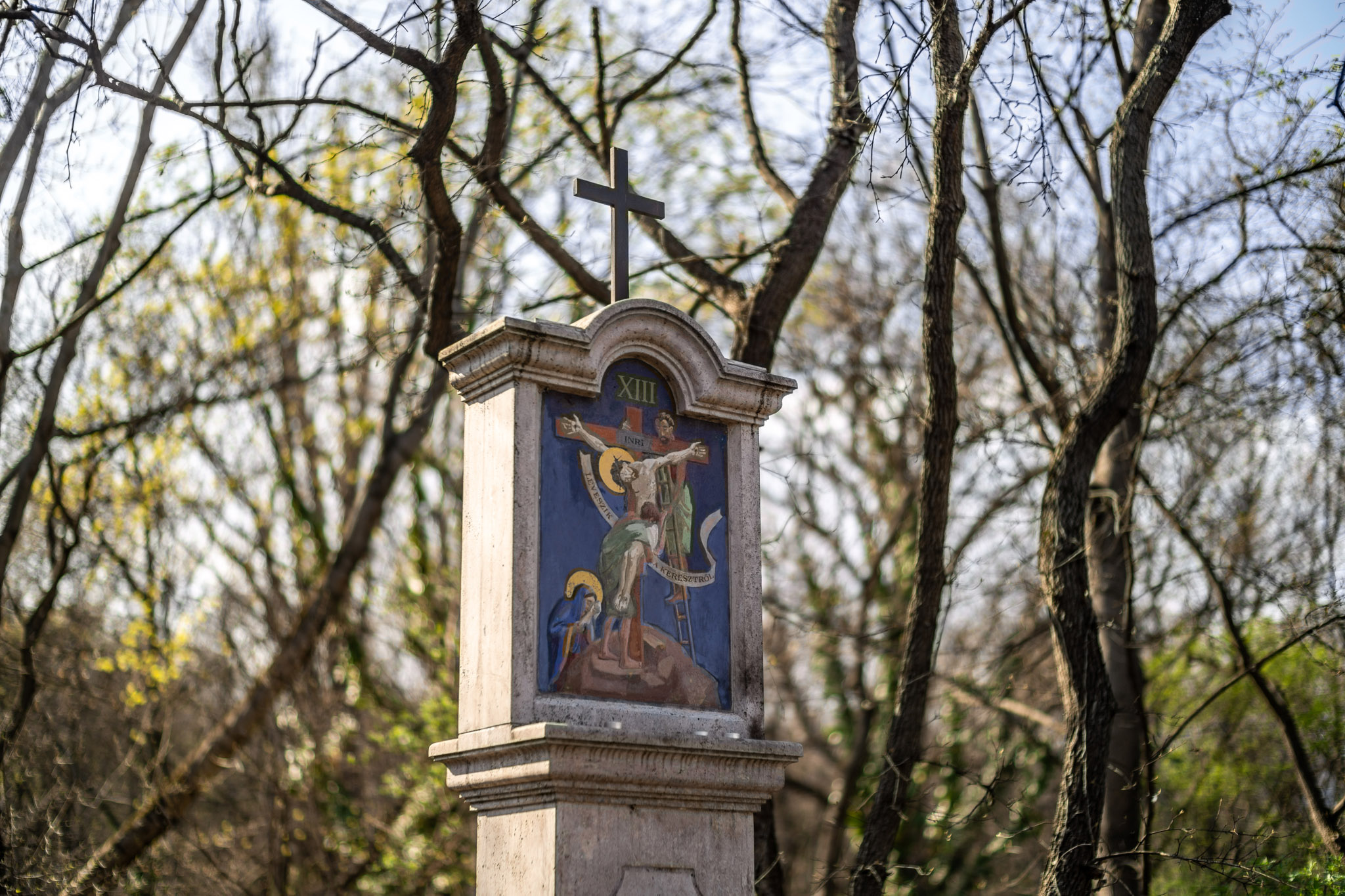
The 13th station of the Way - Jesus is taken off the cross (Photo: Balázs Both/pestbuda.hu)
The last station of the Way shows the scene of Jesus being placed in the tomb. According to tradition, after Good Friday, on Good Saturday, Jesus Christ lay dead in his grave. Christianity celebrates the resurrection of Jesus during the night between Good Saturday and Easter Sunday.
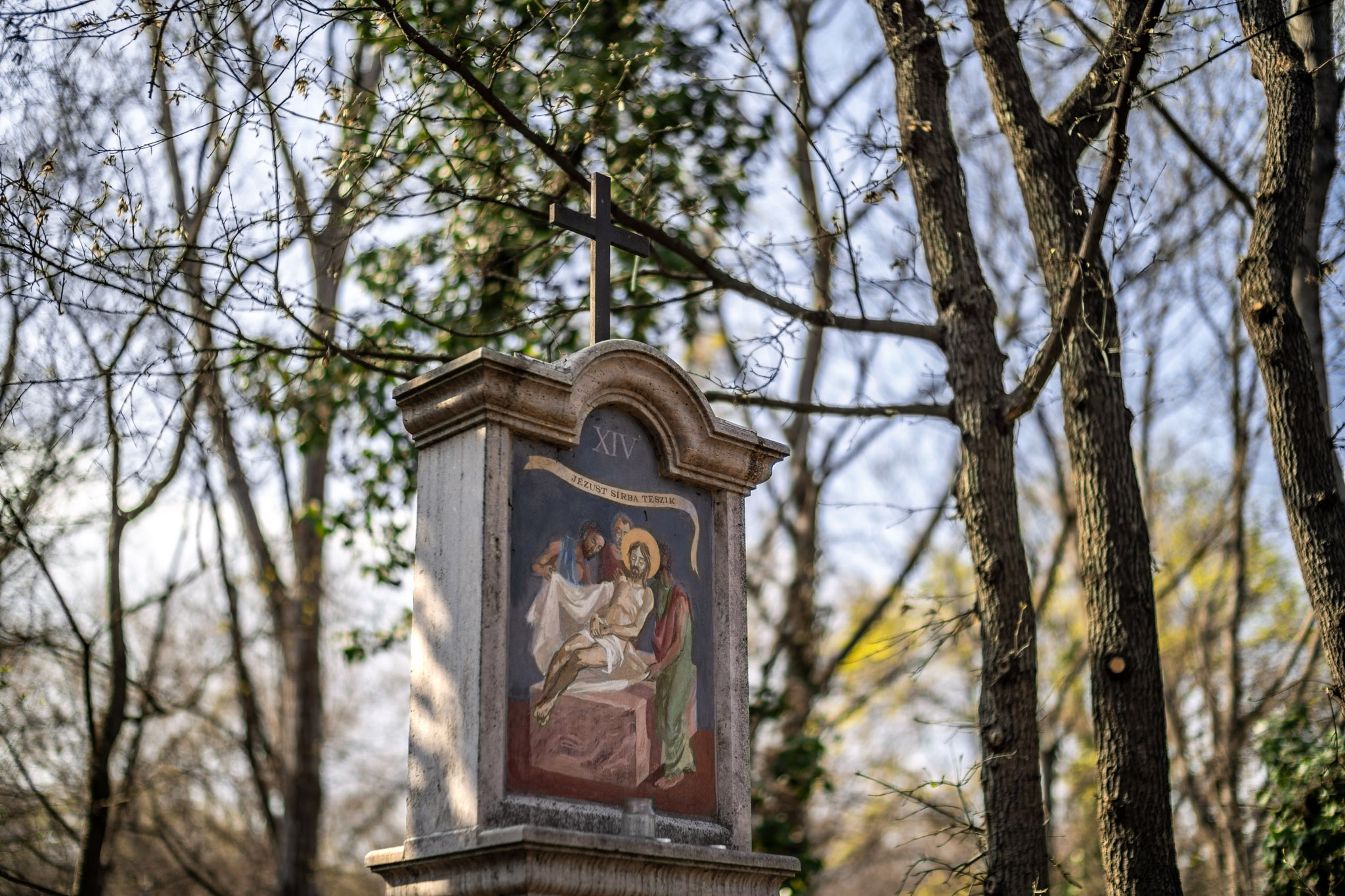
The 14th station of the Way – Jesus is placed in the grave (Photo: Balázs Both/pestbuda.hu)
The photo below is also special because it was taken at Easter before the 1956 revolution. The faithful in the picture are praying at one of the stations of the Kiscelli Calvary. Fortunately, the recently renovated calvary is still very popular today, visited by the faithful, hikers, tourists and even guided groups of tourists. The Holy Trinity Parish of Budapest-Óbuda-Hegyvidék usually holds its Good Friday procession here. But how long have people been coming here, and how did this calvary develop?
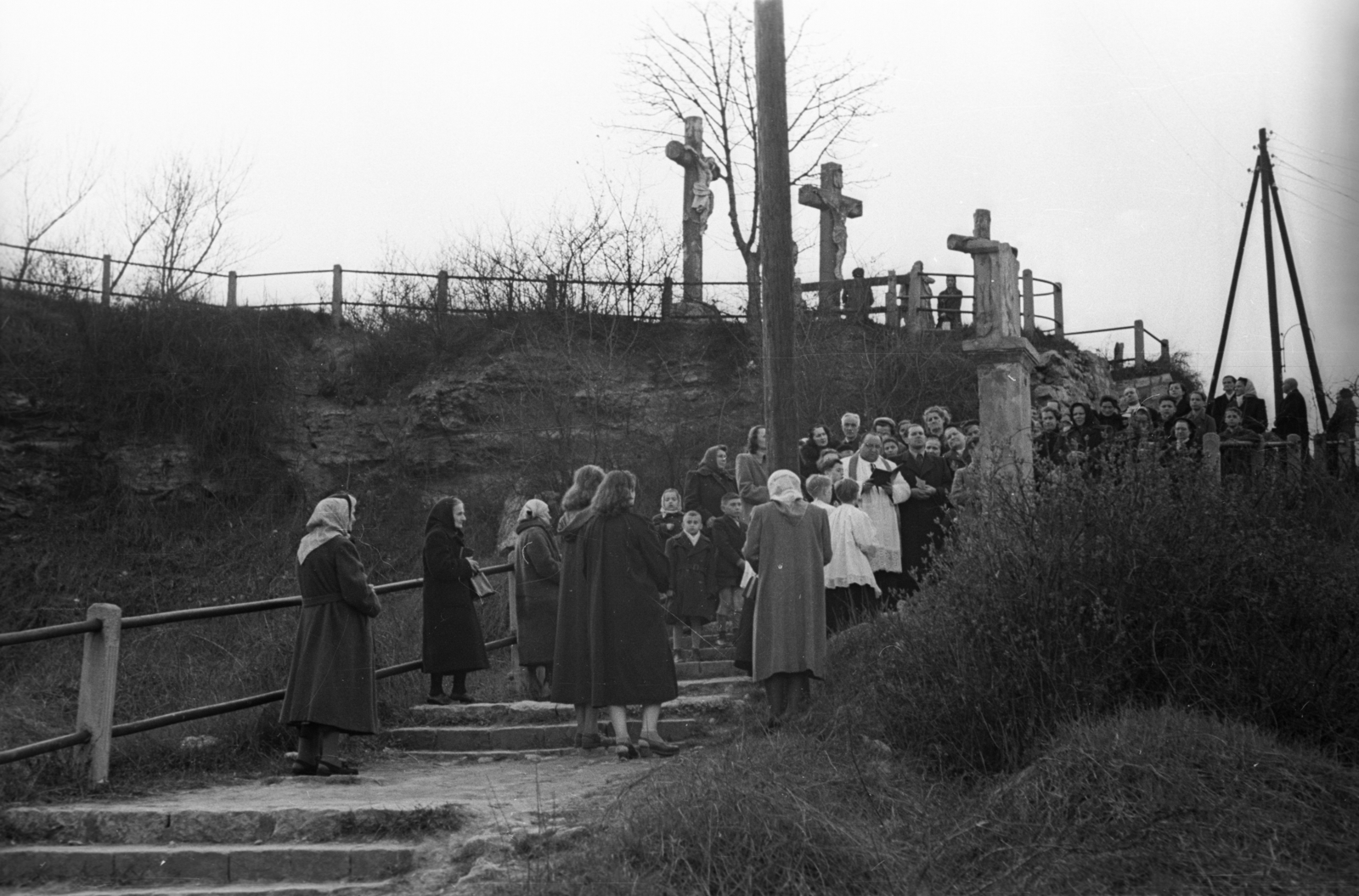
The faithful walking the Way of The Cross in 1956 on Doberdó Road at the Kiscell Calvary (Photo: Fortepan/No.: 108383)
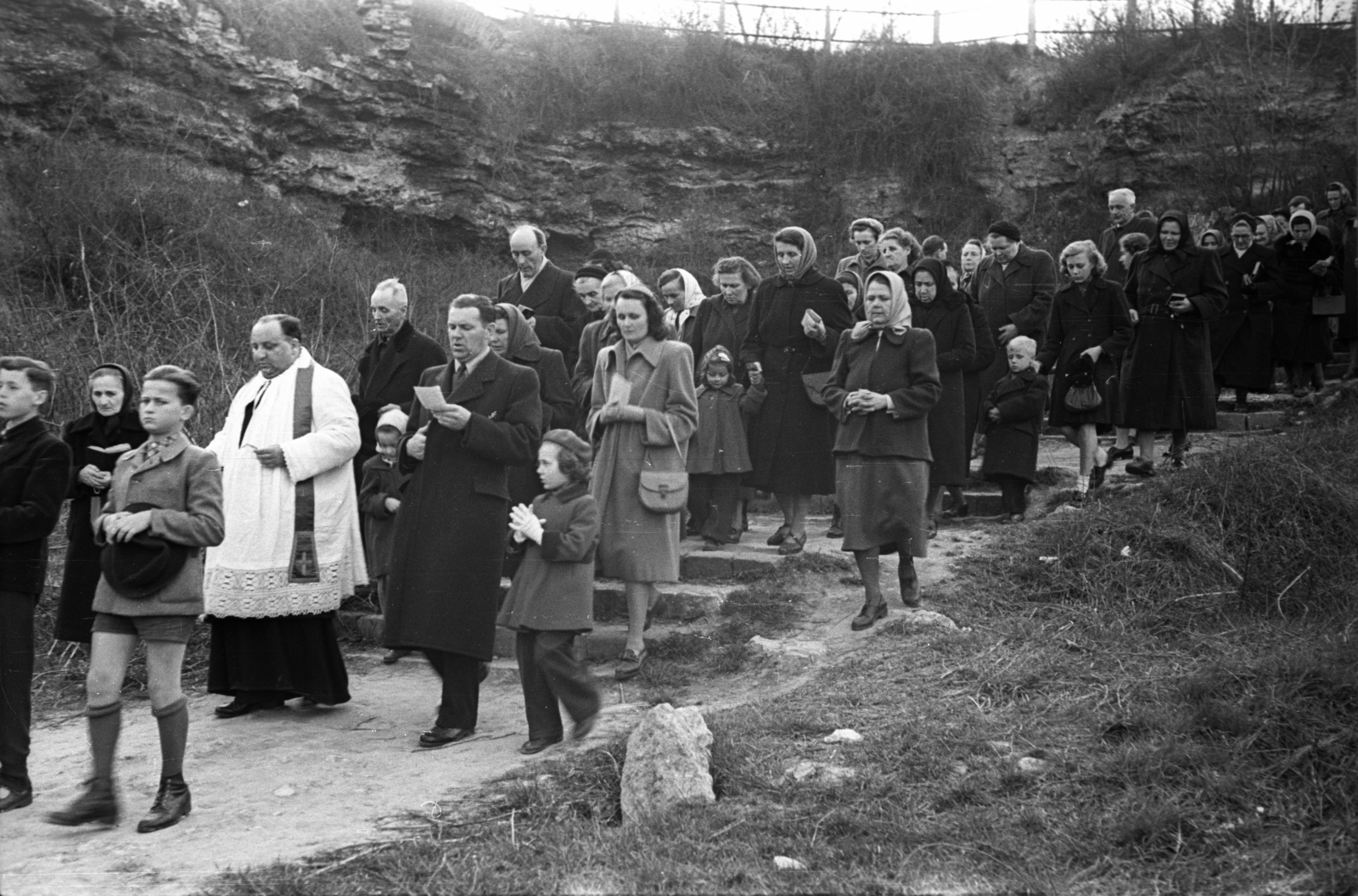
The faithful walking the Way of The Cross heading for the Chapel of the Holy Blood in 1956 (Photo: Fortepan/No.: 108384)
The history of the Calvary began in the middle of the 18th century with the building of the Kiscelli Museum, which was constructed between 1745–58 as a Trinitarian monastery. The road leading to the area was already decorated by a statue of the suffering Christ in the 1770-80s, which was replaced between 1812–14 by the present-day Chapel of the Holy Blood. The Calvary and the 14 stations were built between the monastery and the chapel 200 years ago, in 182--22, for the German-speaking population of Óbuda.
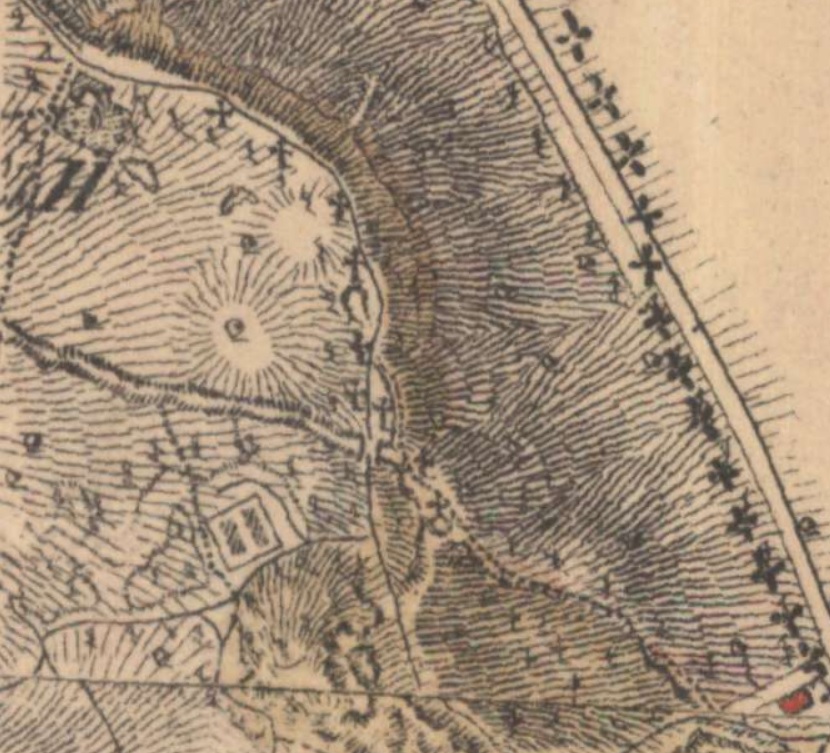
The path marked with crosses between the monastery and the Chapel of the Holy Blood on a map from 1838 (Source: Mapire.eu - Hungaricana)
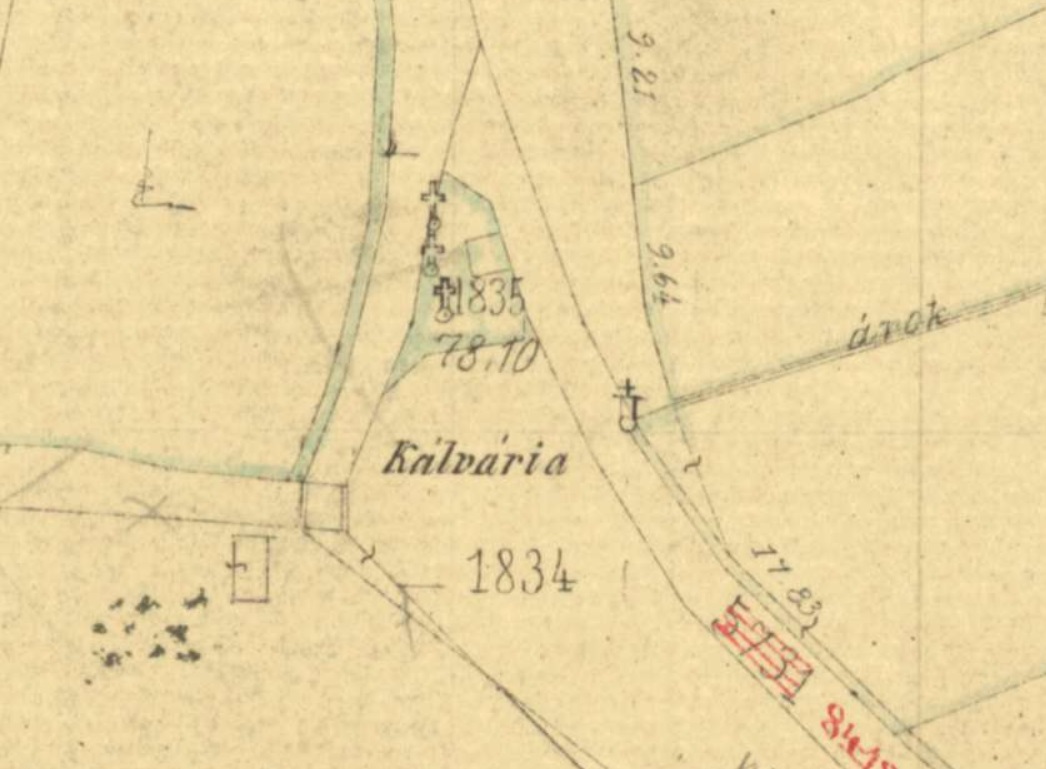
The three crosses of the Calvary on a map from 1876-78 (Source: Mapire.eu - Hungaricana)
There are three crosses on the Calvary; Jesus stands in the middle with a thief on either side. The cross of Jesus is also surrounded by the statue of Jesus' mother, Mary, and Jesus' disciple, John. Over time, the chapel, the stations, and the Calvary statues were damaged several times, and on 17 April 1910, the chapel's roof structure completely burnt down. It was repaired by Abbot Parish Priest József Sagmüller, as was the 1929 damage.
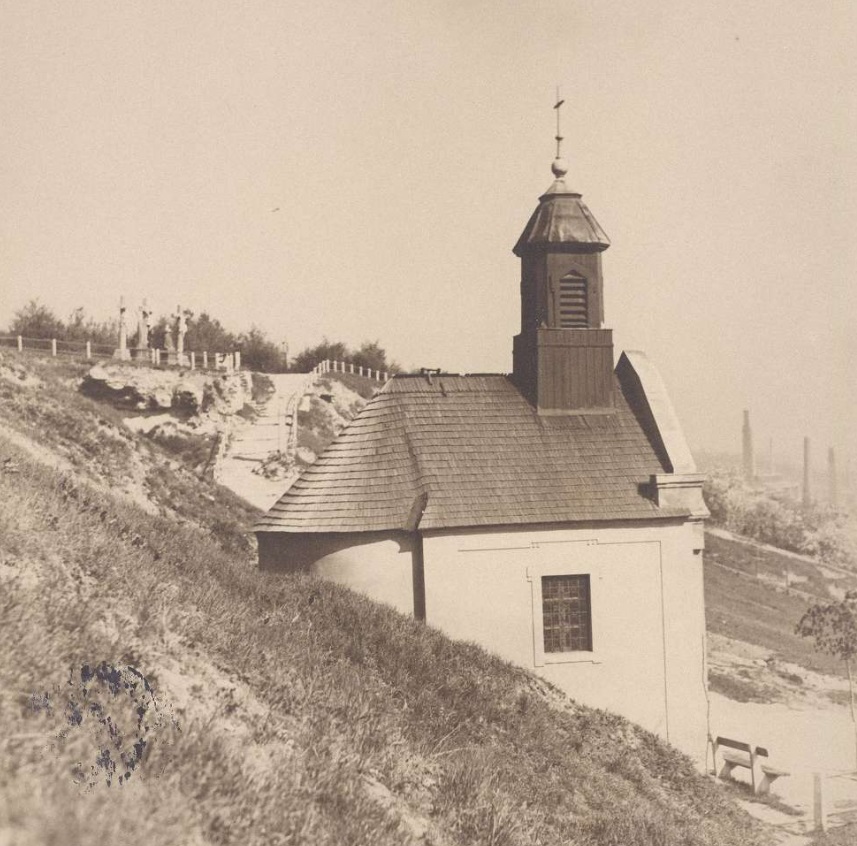
The Chapel of the Holy Blood and the crosses and statues of the Calvary in the background in 1927 (Source: FSZEK Budapest Collection)
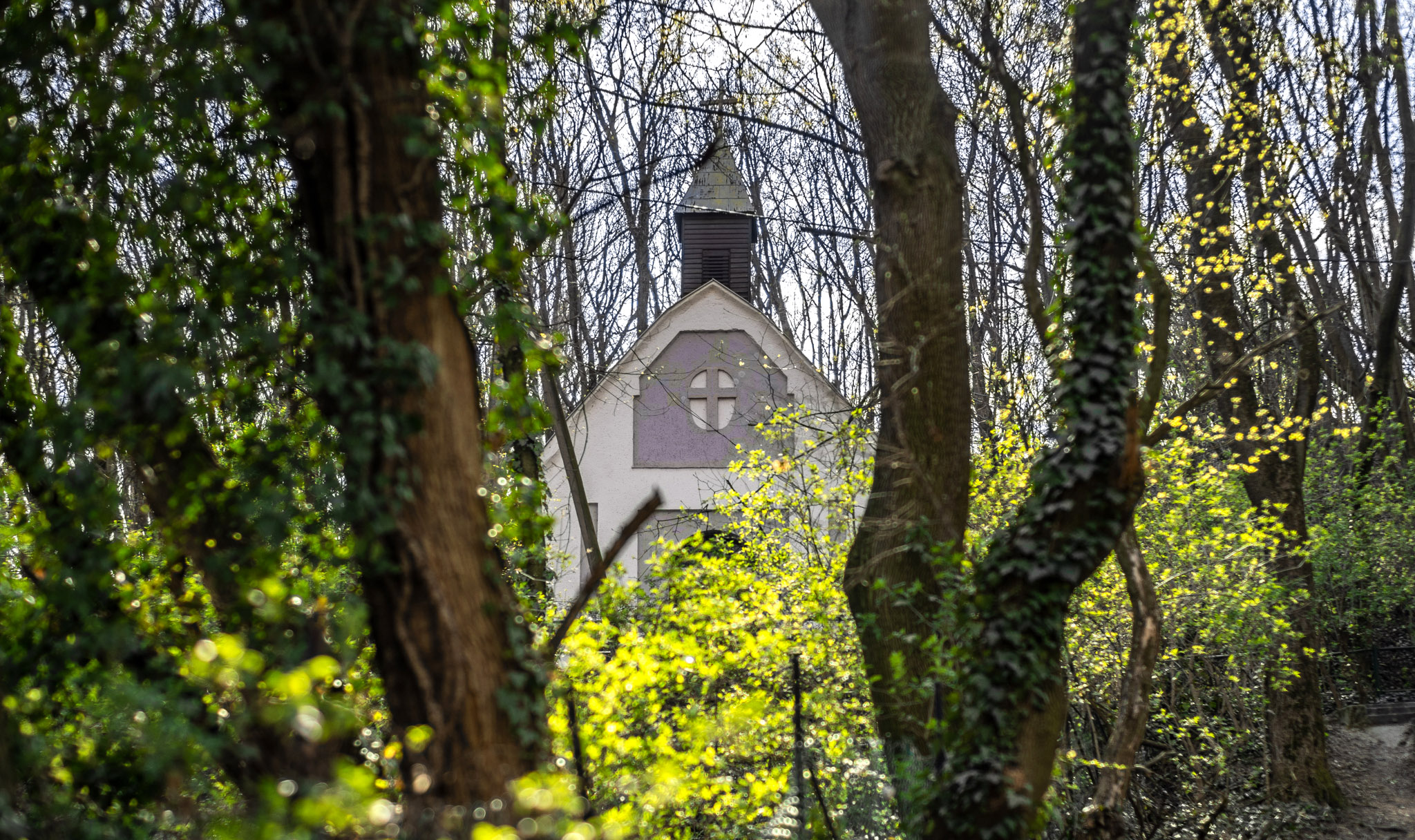
The renovated Chapel of the Holy Blood among the trees today (Photo: Balázs Both/pestbuda.hu)
The 1 April 1923 issue of the Nemzeti Ujság described the Kiscell Calvary and its area as follows:
“Under the three crosses of the old Calvary, I am contemplating the Easter field alone […] Above the troubles of the houses with sunken roofs, the shadow of the crosses of Golgotha rise to the spring sky. […] Two old men in black are walking the Way of The Cross. They stop at each station, take off their hats at once, silently mumbling the prayer. They then proceed to the crest where the Saviour's cross gestures toward them. The two old men are quite the same: clean, black-clad, speechless, slow-moving.”
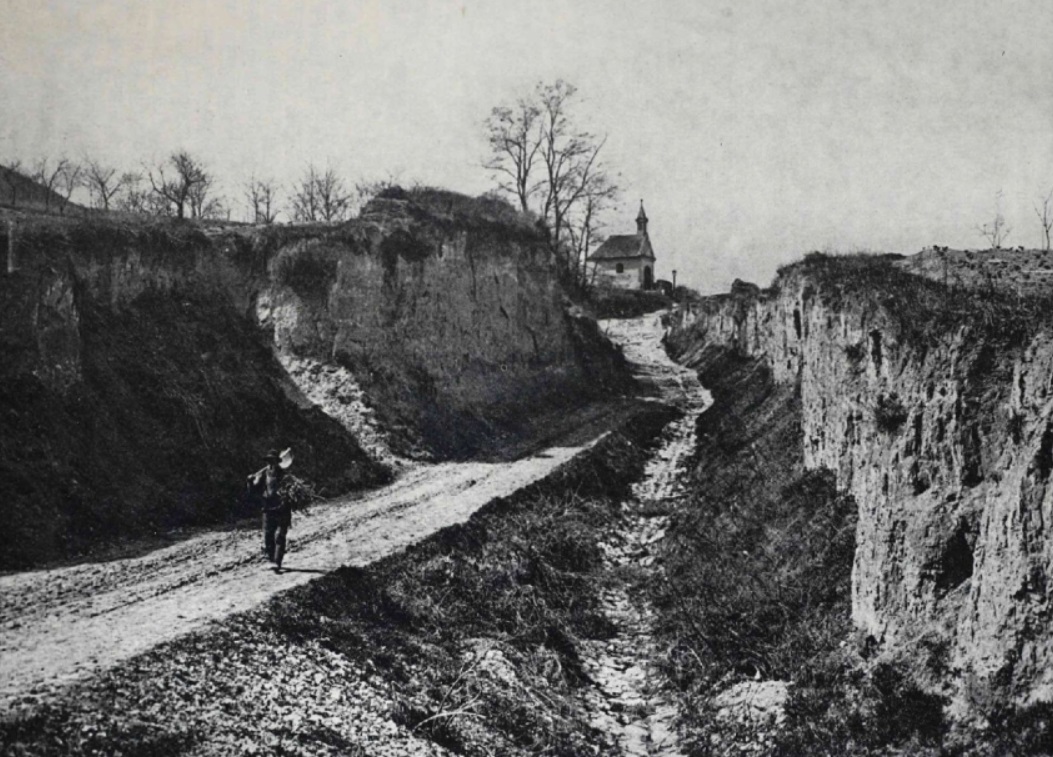
A pilgrim and the Chapel of the Holy Blood in the background (Source: Élet, 27 August 1911)
The newspaper's recollection also revealed that there were once big celebrations in the area on Easter Sunday.
“How beautiful it must have been here in the meadow in day past on Easter Sunday. And nothing is left of it. In the abandoned old cemetery, where the city no longer wants to bury, the Lottis, the carousel operators, the large lads who roasted the ox in the meadow all quietly decay to dust under their headstones and the beautiful granite graves, as do all who once had fun here on Easter afternoons, while from afar the bells of the Castle sounded merry, singing a triumphant hymn. I gaze at the unpopulated meadow, the good mood frozen to a cemetery, and with a sigh, I also head for the first station."
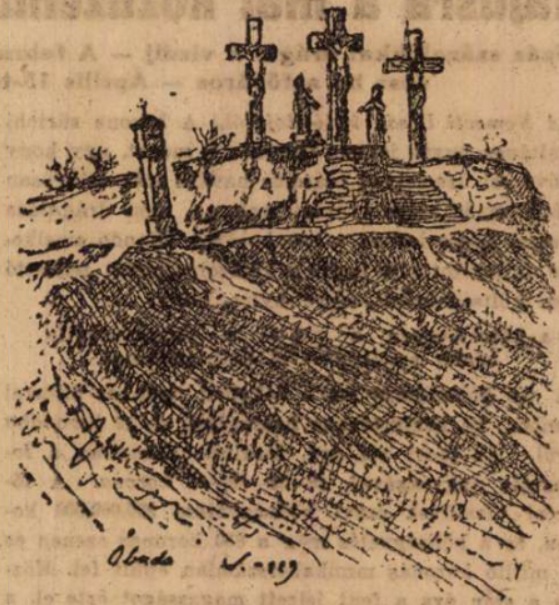
The triple cross of the Calvary, the Statue of Mary and John, and the nearby station in 1923 (Nemzeti Ujság, 1 April 1923)
Képes Vasárnap also reported on the Calvary on 20 April 1943, describing that as early as the 1930s, the rain had already washed away the paint from the stations and sculptures.
“Thus, with the charm of antiquity, we see again the old Calvary on the plateau of the hillside with its picturesque surroundings. The last station stands under the Golgotha mound, and leads from there, to the wooden-towered, rudimentary baroque chapel on Doberdó Road. A wooden-roofed porch was built in front of the chapel. Candles are burning on the small altar, under which the statue of Christ placed in the tomb is covered by the dark purple altar cloth.”
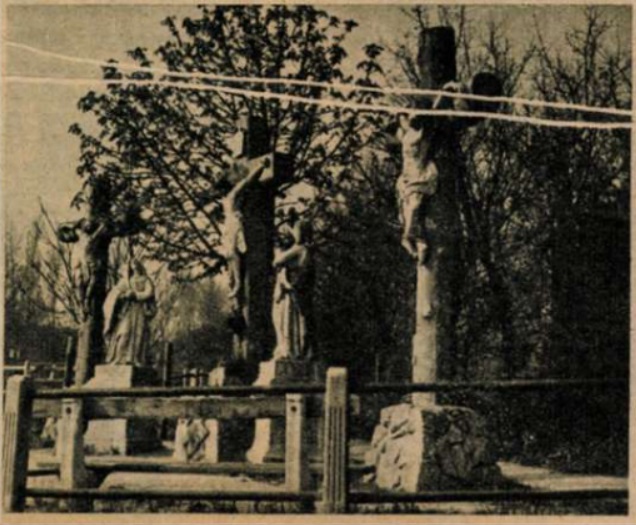
The Calvary with the Golgotha statues in 1943 (Képes Vasárnap, 20 April 1943)
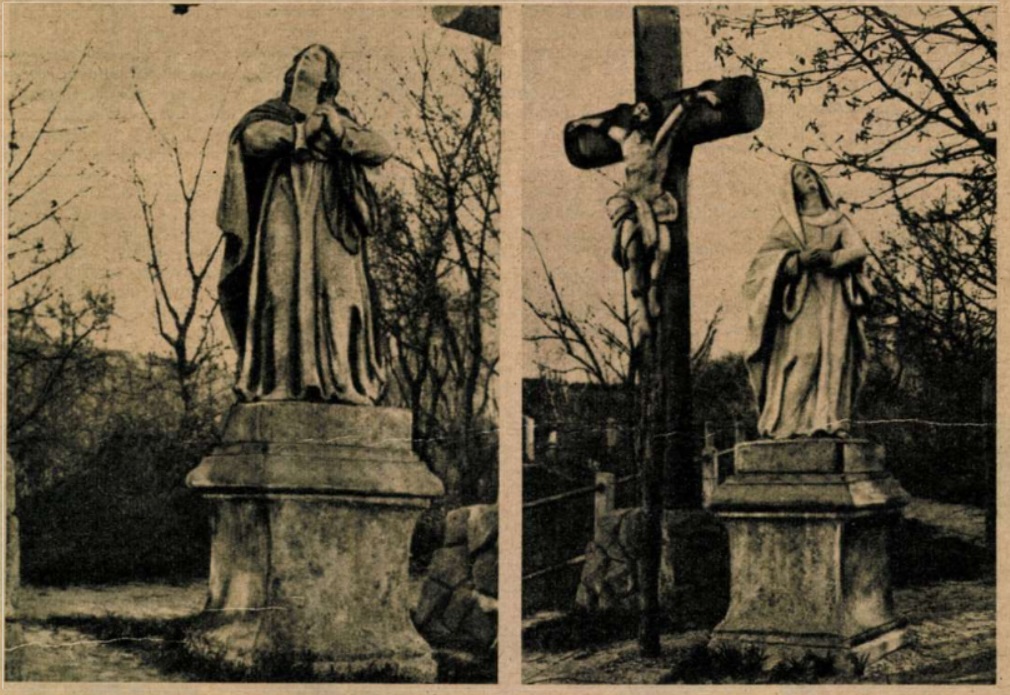
Statue of St. John and the Virgin Mary under the crosses in 1943 (Képes Vasárnap, 20 April 1943)
The Golgotha sculpture, which has to be repaired several times later, was renovated in 1981 and 1996, and the chapel in 2006. Despite this, by the beginning of the 2010s, the Golgotha sculpture had to be renovated again after several parts of the statue broke off. In 2013 and 2014, the Calvary underwent a complete renovation, where in addition to the sculptures, the stations were also restored, and the original colours were also repainted.
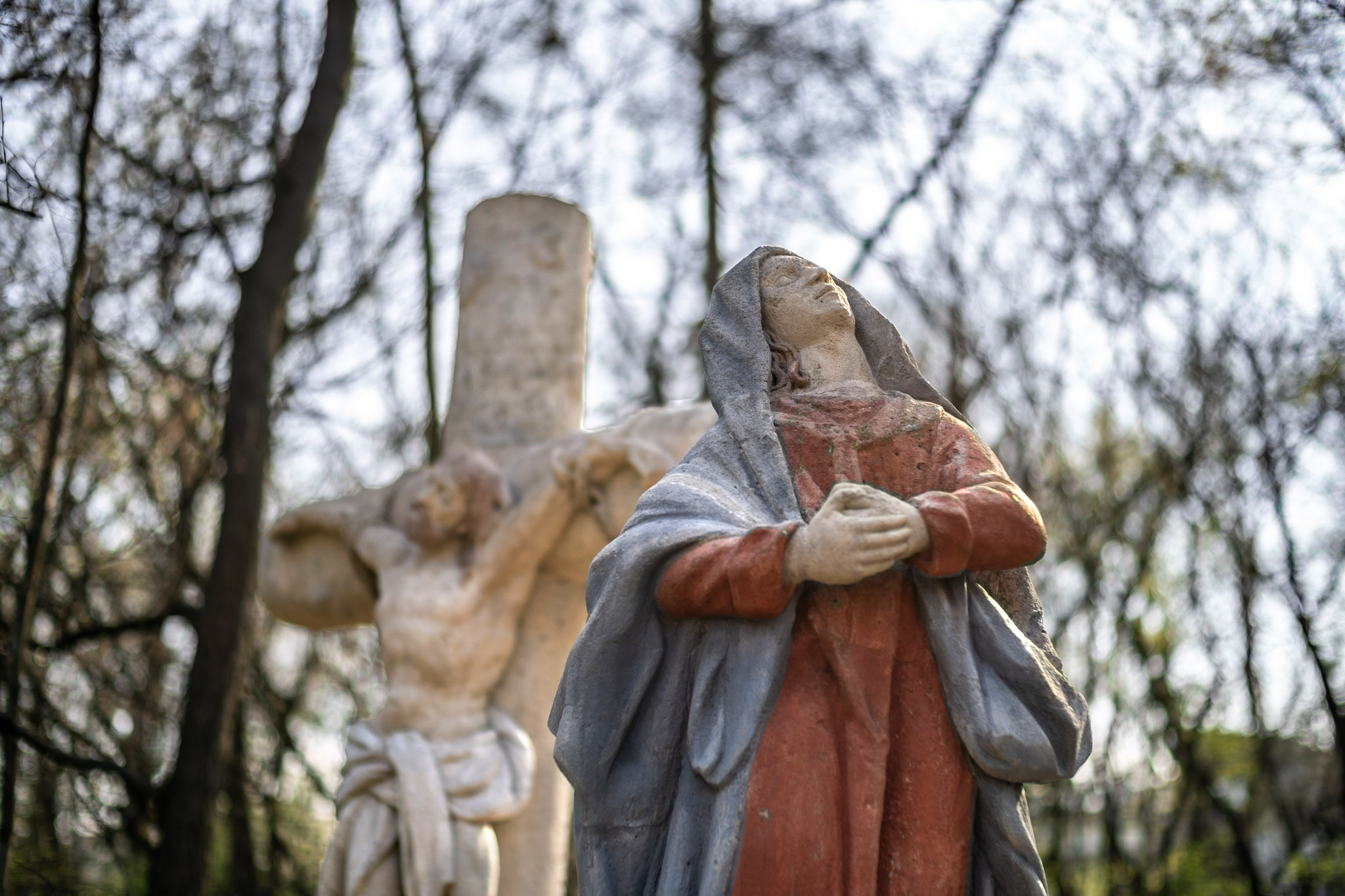
The repainted statue of the Virgin Mary and the Penitent Thief in the background at the Calvary today (Photo: Balázs Both/pestbuda.hu)
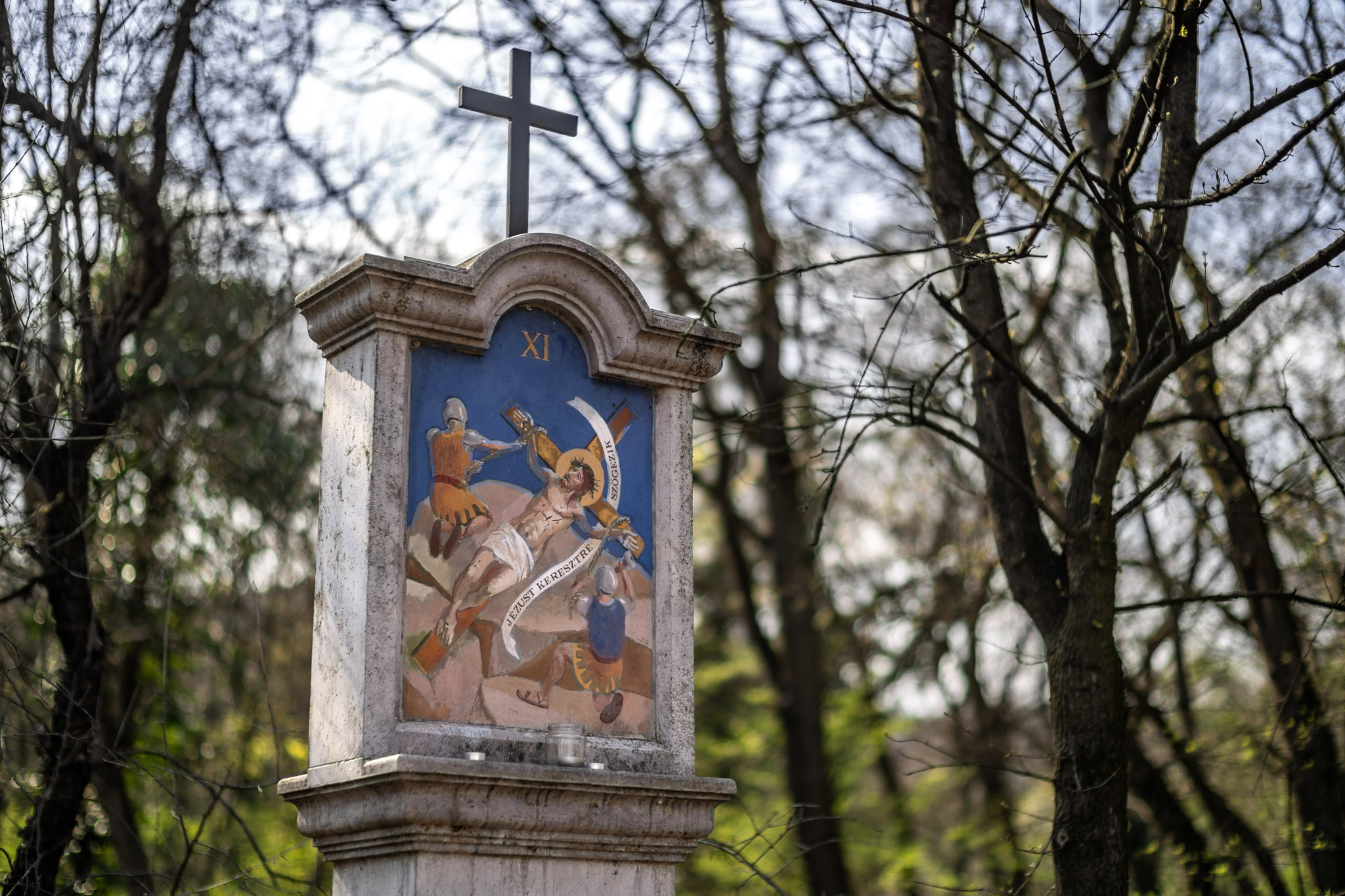
The 11th station of the Way - Jesus is crucified (Photo: Balázs Both/pestbuda.hu)
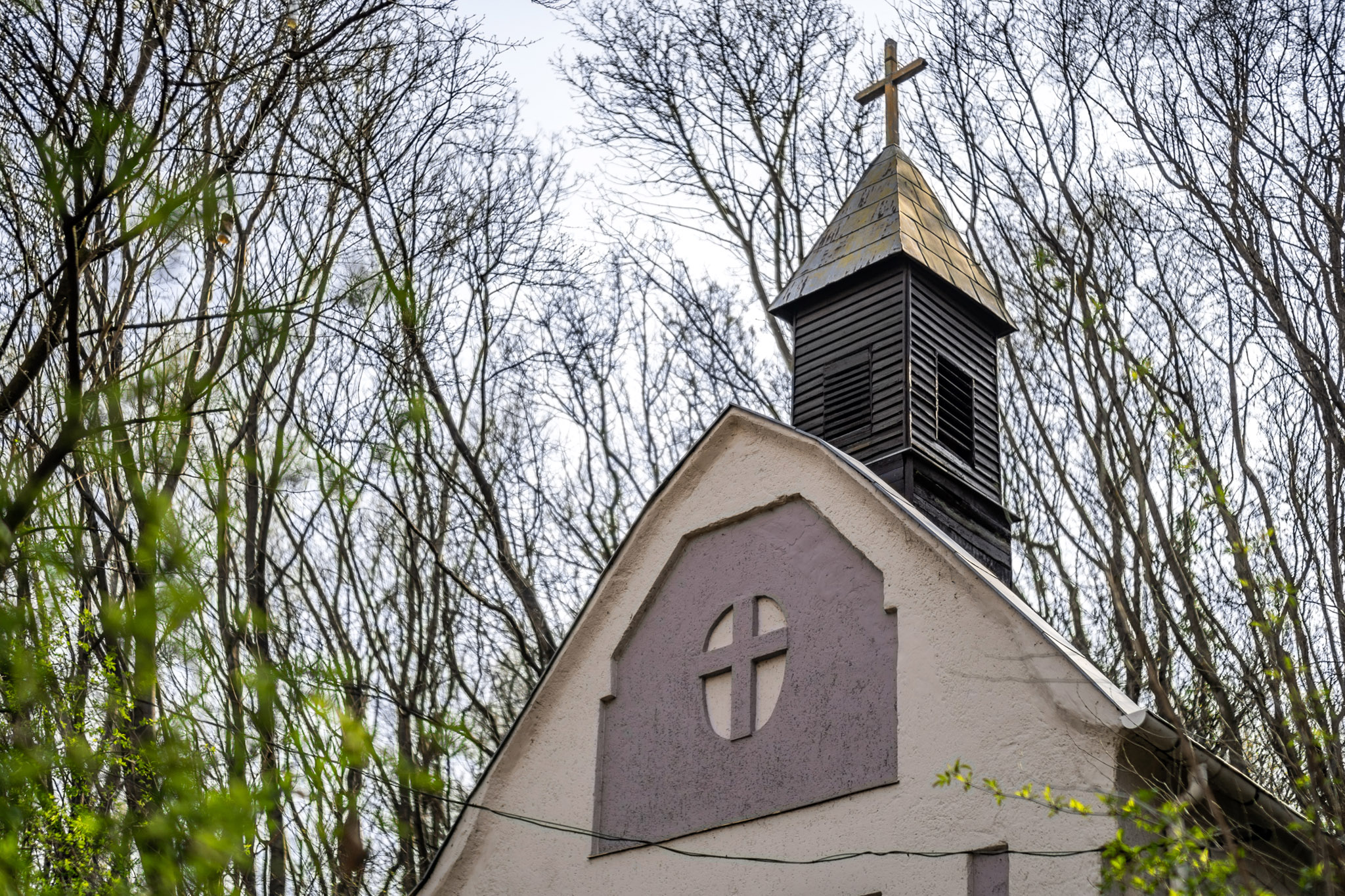
The renovated Chapel of the Holy Blood, built between 1812–14 (Photo: Balázs Both/pestbuda.hu)
A local painter, Tihamér Vízi, initiated the restoration. János Seres and Endre Szőnyi sculptors, Ferenc Miklós Szendrői, Melinda Vass and Judit Szilvási decorative painters and sculptor-restorer Péter Szűcs were also involved in the work. The paintings of the 14 stations were completed by the painter Tibor Bráda.
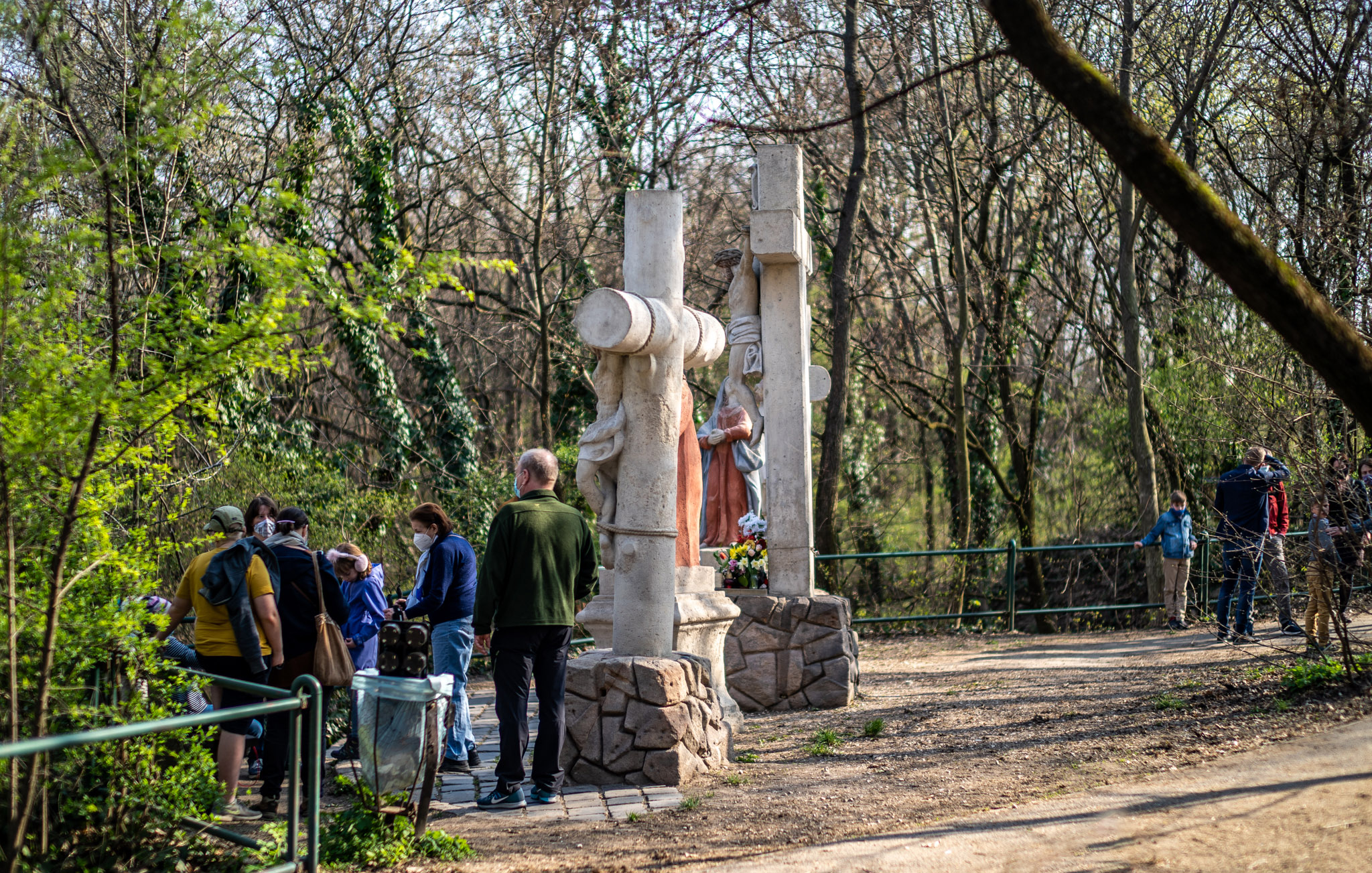
Today, the place is still very popular among both the faithful, tourists and hikers (Photo: Balázs Both/pestbuda.hu)
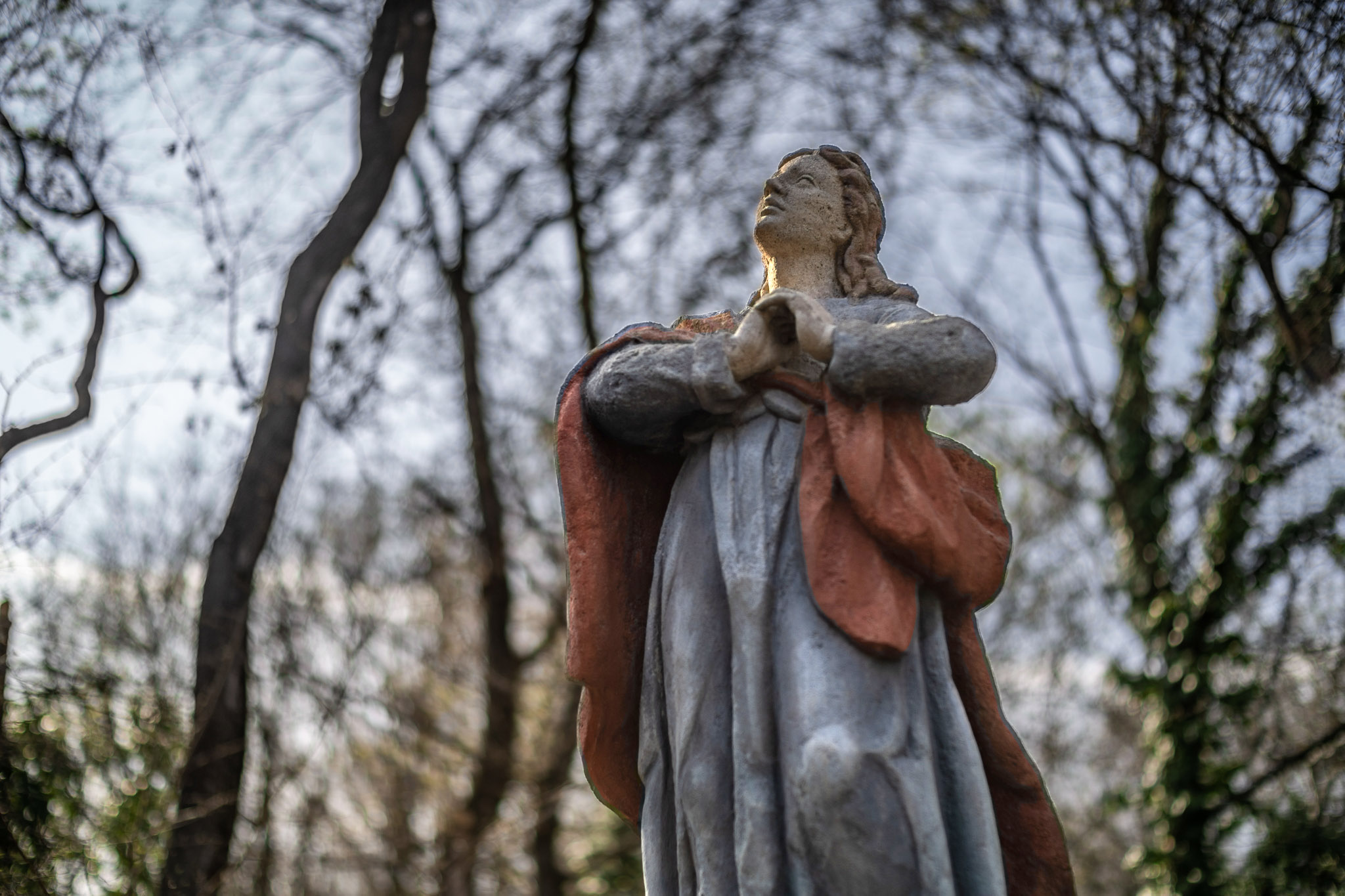
The repainted statue of St. John, a disciple of Jesus, at the Calvary (Photo: Balázs Both/pestbuda.hu)
The Calvary has regained its original splendour and has enjoyed great popularity ever since. If time allows, visit the Way of The Cross at the top of Óbuda, which can rightly be called one of Budapest's old-new jewels.
Cover photo: The Kiscell Calvary on Doberdó Road in 1956 (Source: Fortepan/No.: 108383)

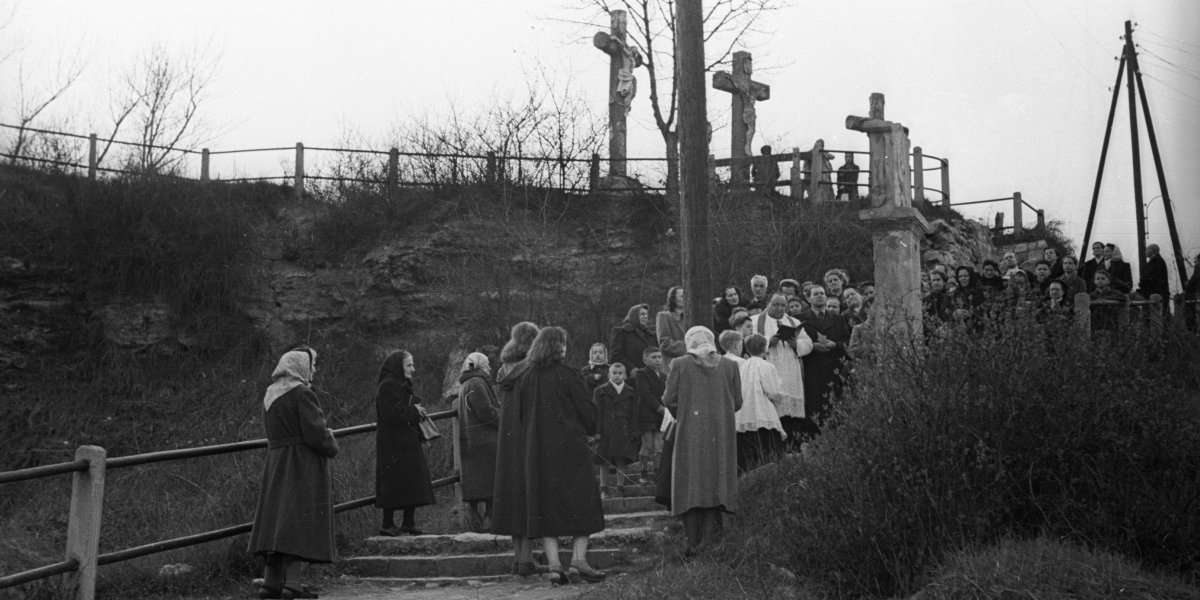



































Hozzászólások
Log in or register to comment!
Login Registration